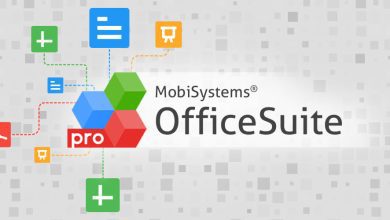AWS Console – Earning Menia – InvestMent Club
AWS Console: A Comprehensive Guide
The AWS Console is a web-based interface that allows you to manage all of your AWS resources and services. It is a one-stop shop for all things AWS, and it is designed to be easy to use, even for beginners.
Navigating the AWS Management Console: Your Gateway to the Cloud”
In the realm of cloud computing, Amazon Web Services (AWS) stands tall as a frontrunner, offering a comprehensive suite of services that cater to businesses and individuals alike. At the heart of AWS lies the AWS Management Console, a powerful web-based interface that serves as your primary gateway to the cloud. In this article, we will explore the AWS Management Console, its features, and how it empowers users to manage their cloud resources effectively.
The AWS Console is divided into two main sections: the Services section and the Navigation section.
Services
The Services section lists all of the AWS services that are available to you. To access a service, simply click on its name.
Once you have selected a service, you will be taken to the service console. The service console is the main interface for managing that service. It contains all of the tools and features that you need to manage your resources and perform tasks.
Navigation
The Navigation section is located on the left side of the AWS Console. It provides access to a variety of tools and resources, including:
- My Account: This page contains information about your AWS account, such as your billing information and your contact information.
- Console Help: This page provides access to documentation and support resources for the AWS Console.
- Support: This page allows you to open support tickets and contact AWS support.
- Regions and Availability Zones: This page allows you to select the region and availability zone where you want to launch your resources.
-
Introducing the AWS Management Console
The AWS Management Console is a web-based user interface provided by Amazon Web Services. It acts as a control center, allowing users to access and manage their AWS resources from a single, centralized location. Whether you’re provisioning virtual servers, setting up databases, configuring networking, or managing storage, the AWS Management Console offers an intuitive and user-friendly platform to get the job done.

Using the AWS Console
To use the AWS Console, you must first create an AWS account. Once you have created an AWS account, you can log in to the AWS Console at https://console.aws.amazon.com.
Once you have logged in, you will be taken to the Services page. To access a service, simply click on its name.
Once you are in a service console, you can use the tools and features to manage your resources and perform tasks. For example, if you are in the Amazon Elastic Compute Cloud (Amazon EC2) console, you can use the tools to launch and manage EC2 instances.
Here are some of the most common tasks that you can perform using the AWS Console:
- Launching and managing EC2 instances
- Creating and managing Amazon Simple Storage Service (Amazon S3) buckets
- Creating and managing Amazon Relational Database Service (Amazon RDS) databases
- Creating and managing Amazon Virtual Private Clouds (Amazon VPCs)
- Creating and managing Amazon Elastic Block Store (Amazon EBS) volumes
- Creating and managing Amazon CloudFront distributions
- Creating and managing Amazon Route 53 domains
AWS Console Features
The AWS Console offers a variety of features that make it easy to manage your AWS resources and services. These features include:
- Search: The AWS Console includes a search bar that allows you to quickly find the services and resources that you are looking for.
- Filters: The AWS Console allows you to filter your resources by various criteria, such as region, availability zone, and tag.
- Sorting: The AWS Console allows you to sort your resources by a variety of criteria, such as name, creation date, and status.
- Tags: Tags are key-value pairs that you can use to label your AWS resources. Tags can be used to group resources together and to make it easier to find them.
- Favorites: You can add services and resources to your favorites list for quick access.
Key Features of the AWS Management Console
1. Resource Management
The console provides a unified view of all your AWS resources, making it easy to monitor, manage, and organize them. You can view information about your instances, databases, storage, and more, simplifying resource tracking and optimization.
2. Service Dashboard
AWS offers a vast array of services, and the console includes a service dashboard that provides quick access to each service. You can explore services by category, making it easier to discover and use the tools that best suit your needs.
3. CloudWatch Integration
AWS CloudWatch, the monitoring and observability service, is tightly integrated with the console. You can create custom dashboards, set up alarms, and gain insights into the performance of your AWS resources, all from a single interface.
4. IAM Management
Identity and Access Management (IAM) is crucial for securing your AWS environment. With the console, you can manage user access, permissions, and policies, ensuring that only authorized individuals can interact with your resources.
5. Billing and Cost Management
Understanding your AWS costs is essential. The console provides access to detailed billing information, cost allocation reports, and budget management tools, helping you keep your cloud spending in check.
6. EC2 Instance Management
Amazon Elastic Compute Cloud (EC2) is a fundamental AWS service, and the console offers a streamlined interface for launching, configuring, and managing EC2 instances. You can select pre-configured machine images (AMIs) or create your own, making it easy to deploy virtual servers.
Navigating the AWS Management Console
Using the AWS Management Console is a straightforward process. Here’s a brief guide on how to navigate and utilize its features:
1. Sign in to Your AWS Account
To access the console, sign in to your AWS account using your credentials. If you don’t have an AWS account, you can create one on the AWS website.
2. Dashboard Overview
Upon logging in, you’ll arrive at the AWS Management Console dashboard. Here, you’ll find a customizable view that displays your most frequently used services, resource status, and billing information.
3. Service Navigation
To access a specific AWS service, use the “Services” dropdown menu at the top left corner of the console. You can explore services by category or search for a specific service by name.
4. Resource Management
Click on a service to access its respective dashboard. From there, you can create, configure, and manage resources associated with that service. For instance, you can launch EC2 instances, create S3 buckets, or set up RDS databases.
5. IAM and Security
To manage user access and security settings, navigate to the “IAM” section within the console. Here, you can create and manage user accounts, groups, roles, and policies.
6. Cost and Billing
For cost and billing insights, access the “Billing and Cost Management” section. Here, you can view detailed billing reports, set up budgets, and manage payment methods.
AWS Console Best Practices
Here are some best practices for using the AWS Console:
- Use tags to organize your resources: Tags can help you to organize your resources and to make them easier to find.
- Use the search bar to find the services and resources that you are looking for: The search bar is a quick and easy way to find the services and resources that you need.
- Use filters and sorting to narrow down your results: Filters and sorting can help you to narrow down your results and to find the specific resources that you are looking for.
- Add services and resources to your favorites list for quick access: If you frequently use the same services and resources, add them to your favorites list for quick access.
- Use the AWS Console documentation and support resources: The AWS Console documentation and support resources can provide you with help and guidance on how to use the AWS Console.
Conclusion
The AWS Console is a powerful tool that allows you to manage all of your AWS resources and services. It is easy to use and offers a variety of features
The AWS Management Console is a pivotal tool that empowers users to harness the full potential of Amazon Web Services. Whether you’re a seasoned cloud professional or a newcomer to AWS, the console provides a user-friendly interface to manage your cloud resources efficiently. With its resource management capabilities, service dashboards, CloudWatch integration, IAM management, billing insights, and more, the AWS Management Console serves as the central hub for your cloud operations. Embrace the console, and you’ll unlock the power of AWS at your fingertips, enabling you to build, deploy, and scale your cloud infrastructure with ease and confidence.



